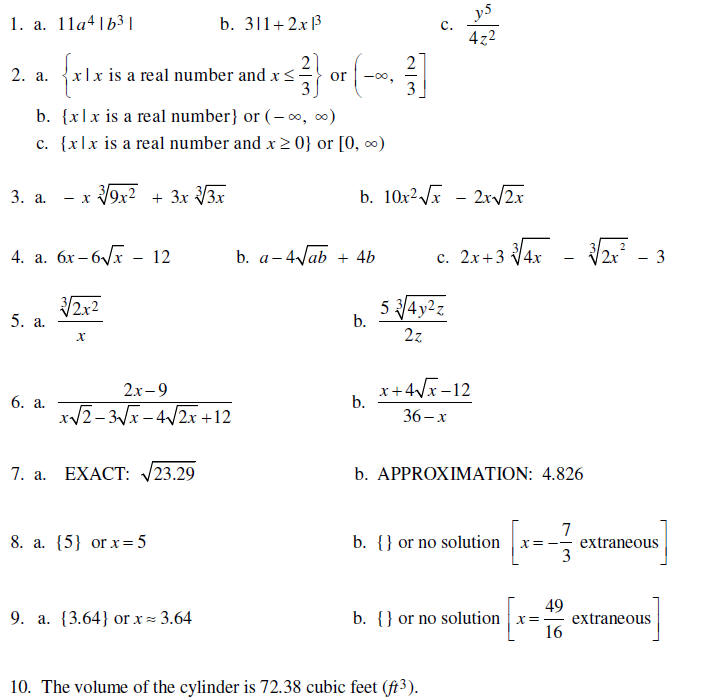Solving Radical Equations
Test Y11 (10 problems) -- This review may be completed
after working the assignments listed in the
outline.
1. Simplifying Radical Expressions
Simplify. Assume that all variables represent any real number.

2. Domain of a Radical Function
Identify the domain of each function.

3. Adding and Subtracting Radical Expressions
Add or subtract. Assume that all variables represent positive real numbers.

4. Multiplying Radical Expressions
Multiply and then simplify, if possible.
Assume that all variables represent positive real numbers.

5. Rationalizing the Denominator in a Radical Expression
Rationalize the denominator and simplify. Assume that all
variables represent
positive real numbers.

6. Rationalizing Numerators and Denominators of Radical Expressions
Assume that all variables represent positive real numbers.
a. Rationalize the numerator and simplify:
b. Rationalize the denominator and simplify:
7. Using the Pythagorean Theorem
Use the Pythagorean Theorem to find the EXACT value of the
hypotenuse of a right triangle if the
lengths of the legs are 2.7 and 4. Using your calculator, APPROXIMATE
this value to three decimal places (nearest thousandth).
a. EXACT:_______________ b. APPROXIMATION:________________
8. Solving Radical Equations Algebraically
Solve ALGEBRAICALLY.

9. Solving Radical Equations Graphically
Solve by a GRAPHICAL method.
Round solutions, if any, to 2 decimal places (nearest hundredth).

10. Applications with Radical Expressions
Solve. Interpret the results. Include correct units.
Round your answer to two decimal places (nearest hundredth).
The radius, r, of a right circular cylinder is given by the formula
 where V is the volume of the cylinder and h
is its height.
where V is the volume of the cylinder and h
is its height.
For a cylinder with a radius of 2.4 feet and height of 4 feet, find the volume
of the cylinder.
Math in Action [Math 115] Test Y11 Review Answers



